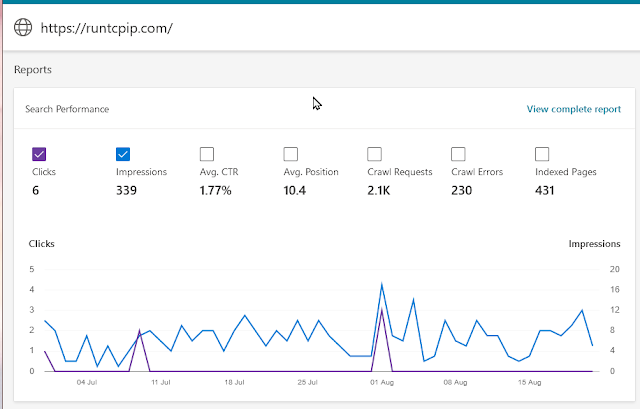The very large "10 books in 1" tome, "Building Websites (all in one) for Dummies", is something I often peruse late at night.
The ways of the Old Web give me comfort.
But something caught my eye.
💡 "Submit a sitemap to Google and Bing. Yahoo uses the same search options as Bing, so no need for that."
Now, this book is not new (There's a section on how you need to put in some XSS code to be able to take PayPal payments on your Webpress site - Is that still a thing?).
So, I thought the idea of sitemaps was long gone.
However - sitemaps are still in use today!
What is a Sitemap?
It's an XML file optimized for search engines to find your website, listing every page on your website. "Spiders" crawl pages to index for search engines.
Why Bing?
I use Bing for my regular searching on the web. I also submitted my sitemap to Google, as my blog is hosted on their platform and my domain is purchased through them.
(I'm not sure it worked. You'd think the platform owned by Google would have much - Honestly, any - integration with Google Analytics, but if they do, I can't find it).
The Beginning
Before my submission, Bing had found some pages, but were unable to index them.
I submitted my sitemap to Bing June 30th, at about 11:30 PM. Here are the stats nearly 12 hours later, on July 1st;
And here are some charts and graphs on August 22nd; Nearly 2 months later.
What does it mean? Well, my site is probably not optimized for webcrawlers, despite my attempts. 431 pages are search-indexed by Bing - With only about 260 blog posts, that's good - Someone knows I'm here!
Clicks is how many times someone clicked when I showed up in search results. My guess is Avg. Position is where I land on the search rankings list. You know how you search, oh, Twitter.com and it's right near the top? That's a combination of Twitter paying to be that high up so many people will click it - Which makes it rise.
There's a lot of SEO errors - Simply put, the platform I used (Owned by Google) isn't optimized to use SEO properly, like WordPress (or Wordpress?) would be.
I've been looking to migrate for some times, but until I get permanent work, that's a cost I can't justify, especially with limits of "25,0000 views a month is 100$ a month for the cheapest option" - That's not necessary for now, but in the near future, perhaps.
I do appreciate how the SEO Errors page is clear and helpful.





Comments
Post a Comment